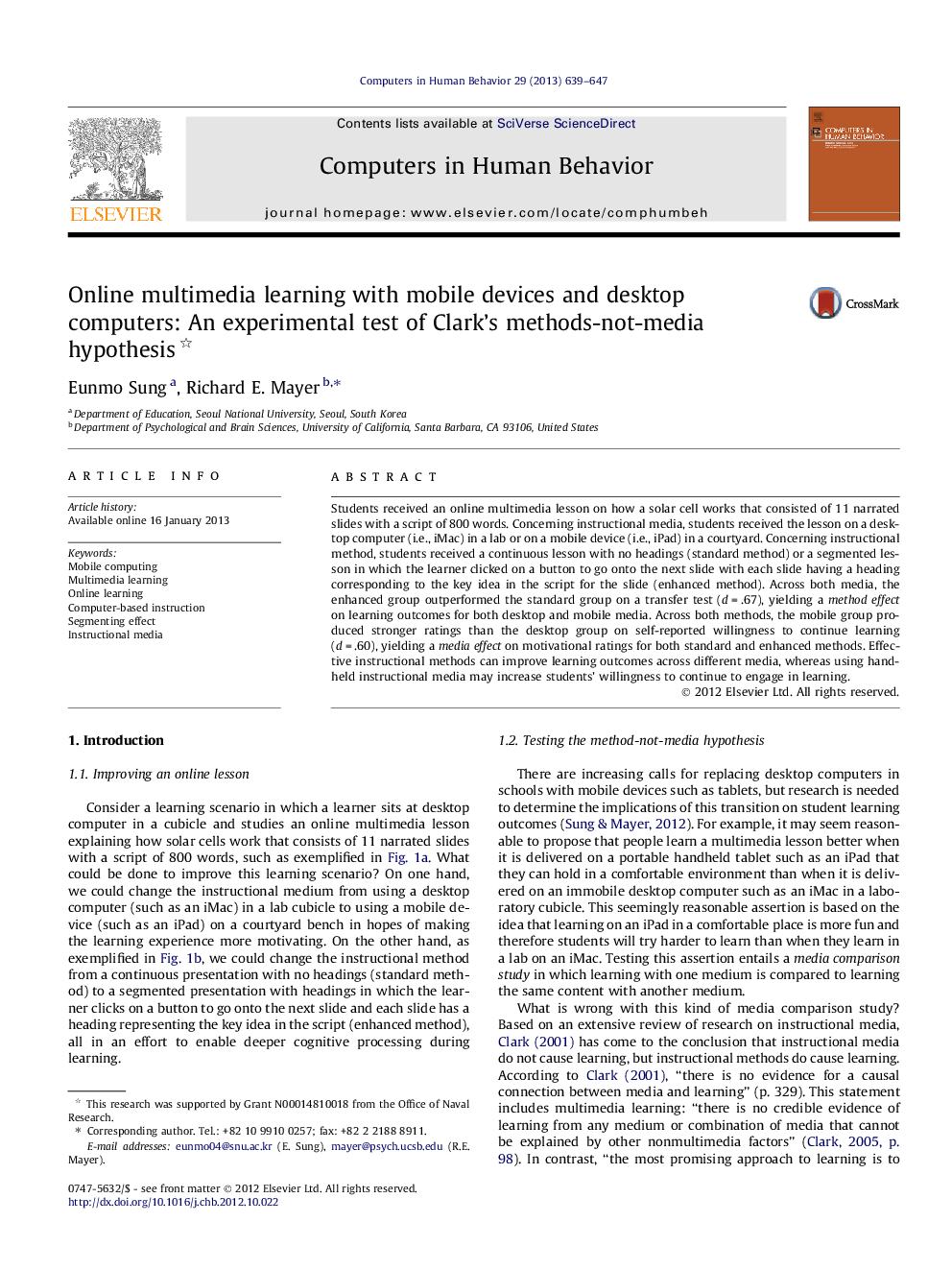| Article ID | Journal | Published Year | Pages | File Type |
|---|---|---|---|---|
| 351199 | Computers in Human Behavior | 2013 | 9 Pages |
Students received an online multimedia lesson on how a solar cell works that consisted of 11 narrated slides with a script of 800 words. Concerning instructional media, students received the lesson on a desktop computer (i.e., iMac) in a lab or on a mobile device (i.e., iPad) in a courtyard. Concerning instructional method, students received a continuous lesson with no headings (standard method) or a segmented lesson in which the learner clicked on a button to go onto the next slide with each slide having a heading corresponding to the key idea in the script for the slide (enhanced method). Across both media, the enhanced group outperformed the standard group on a transfer test (d = .67), yielding a method effect on learning outcomes for both desktop and mobile media. Across both methods, the mobile group produced stronger ratings than the desktop group on self-reported willingness to continue learning (d = .60), yielding a media effect on motivational ratings for both standard and enhanced methods. Effective instructional methods can improve learning outcomes across different media, whereas using hand-held instructional media may increase students’ willingness to continue to engage in learning.
• Students studied a standard or enhanced lesson using an iMac or iPad. • Better transfer with enhanced lesson across both media. • Higher motivational ratings with iPad across both methods. • Method affects learning outcome; medium affects willingness to continue learning.
